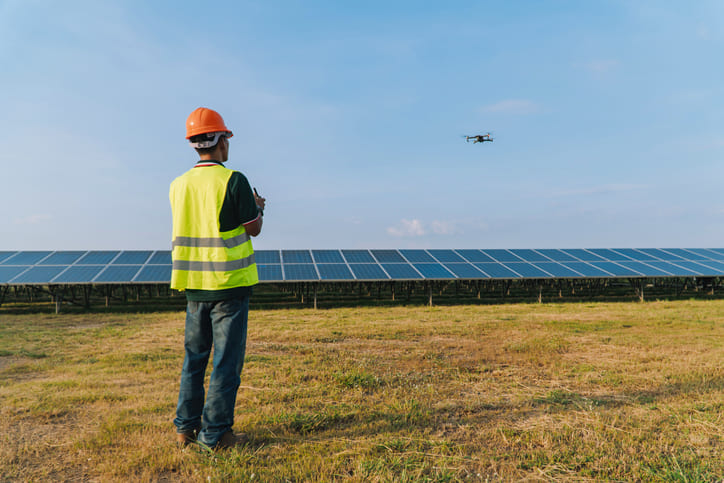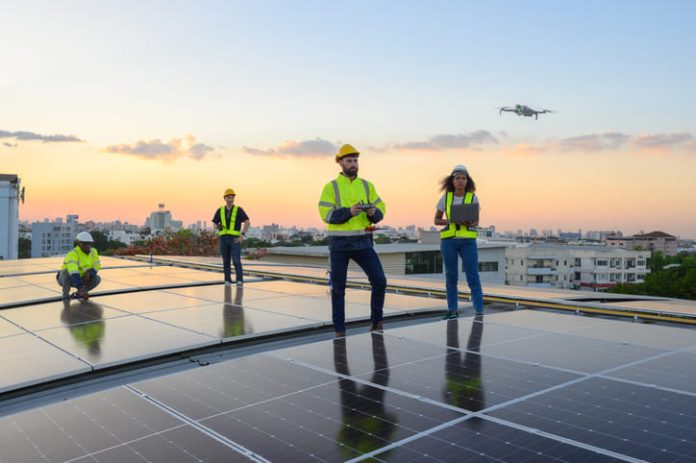In today’s rapidly evolving renewable energy landscape, solar power has emerged as a critical component of sustainable energy portfolios worldwide. As solar installations grow in size and complexity, the industry faces new challenges in maintaining optimal efficiency and performance. Recent technological innovations combining artificial intelligence with drone technology are transforming how solar facilities are monitored and maintained.
The Evolution of Solar Plant Monitoring
Traditional solar plant monitoring has historically been a labor-intensive and time-consuming process. Technicians would manually inspect thousands of panels, often taking weeks to complete comprehensive assessments of large installations. This approach frequently resulted in delayed detection of issues, reduced energy generation, and significant maintenance costs.

“When solar installations began booming across Eastern Europe, many facility owners discovered that manual inspection methods couldn’t keep pace with the scale of modern solar farms,” notes industry expert Denys Syntiuk – CEO of Drone Inspect LLC (Ukraine) and Cognitivision LLC (USA), who has worked in renewable energy for over a decade.
The limitations of conventional monitoring approaches have driven innovation in the sector, with several companies now developing integrated solutions that leverage advanced technologies.
Combining AI and Drones: A Technological Breakthrough
The integration of artificial intelligence, machine learning, and aerial drone technology represents a significant leap forward in solar plant diagnostics. These systems can transform lengthy inspection processes into efficient automated procedures that yield results within hours rather than weeks.
Modern monitoring solutions typically employ specialized drones equipped with thermal imaging cameras that can rapidly survey large solar installations. These drones capture thermal images of solar panels, which are then analyzed by AI algorithms trained to recognize various types of defects and anomalies.
“The combination of aerial thermography with artificial intelligence has fundamentally changed what’s possible in solar diagnostics,” explains Denys Syntiuk. “What used to take 20 technicians several weeks can now be accomplished by a single drone operator in a day, with far greater accuracy.”
How Modern Monitoring Systems Work
Today’s advanced monitoring technologies follow a systematic workflow designed to maximize efficiency and accuracy:
Data Collection: Drones equipped with thermal imaging cameras fly over solar installations, capturing comprehensive imagery of all panels.
- Digital Mapping: The collected data is processed to create detailed digital maps of the entire installation.
- AI Analysis: Machine learning algorithms analyze the thermal patterns of each panel, identifying anomalies that might indicate issues such as:
- Faulty diodes
- Hot spots
- Cell degradation
- Connection problems
- Shading issues
- Reporting and Recommendations: The system generates detailed reports highlighting problem areas and recommended maintenance actions.
- Performance Forecasting: Advanced systems can also predict future performance based on current conditions and historical data.
The most sophisticated solutions on the market today offer integrated operations and maintenance platforms that help facility managers track issues, schedule repairs, and monitor overall system performance.
Benefits of AI-Powered Solar Monitoring
The adoption of AI and drone-based monitoring solutions offers numerous advantages for solar installation owners and operators:
- Proactive Maintenance: Rather than reacting to problems after they’ve caused significant generation losses, operators can identify and address issues before they escalate.
- Cost Reduction: Early detection of defects prevents costly equipment damage and generation losses, while also reducing labor costs associated with manual inspections.
- Improved Accuracy: AI algorithms can detect subtle anomalies invisible to the human eye, ensuring no problems go unnoticed.
- Operational Efficiency: Scheduled maintenance based on accurate diagnostics is more cost-effective than emergency repairs.
- Data-Driven Decision Making: Comprehensive digital records provide valuable insights for long-term asset management and investment planning.
Global Adoption and Market Trends
Advanced monitoring solutions are gaining traction across major solar markets worldwide. Countries with substantial solar capacity including Ukraine, Poland, Romania, Turkey, Israel, and the United States have seen rapid adoption of these technologies. Major energy companies are increasingly incorporating AI-based monitoring into their standard operations and maintenance procedures.
“The industry is clearly moving toward digitalization and automation,” notes an energy analyst from a leading consultancy. “Companies that fail to adopt these technologies risk falling behind in terms of operational efficiency and profitability.”
Future Directions in Solar Monitoring
The solar monitoring sector continues to evolve rapidly, with several promising developments on the horizon:
- Predictive Analytics: Next-generation systems aim to predict potential failures before they occur, based on early warning signs invisible to conventional monitoring.
- Virtual Assistants: AI-powered tools that can guide technical personnel through complex maintenance procedures.
- Integration with Smart Grids: Seamless connection with broader energy management systems to optimize overall grid performance.
- Expanded Geographic Coverage: As solar capacity grows globally, monitoring solutions are adapting to different environments, from desert installations to floating solar arrays.
Conclusion
The convergence of artificial intelligence, drone technology, and thermal imaging represents a significant advancement in solar plant monitoring and maintenance. These technologies are helping the renewable energy sector overcome operational challenges while improving reliability and efficiency.
As solar continues to expand its role in global energy systems, sophisticated monitoring solutions will become increasingly vital to ensuring these investments deliver their full potential. By embracing these innovations, the industry is taking important steps toward a more sustainable and efficient energy future.



































